Introducing the next evolution in Yokomo's legendary line of 1/10th scale touring cars.
The 2016 IFMAR World Championship winning, BD8.
Yokomo's race-proven heritage requires no introduction, but for those you that are new to Yokomo please have a quick read. Having produced some of the most winning cars in R/C racing for nearly 30 years, Yokomo's commitment to racing is unparalleled. 4wd cars have long been our forte, with a rich history of championship winning belt-driven cars in both off-road and on-road. The first belt-driven Yokomo touring car to win a championship dates back to the 1990's with the YR-4 series, followed by the MR-4TC series which went on to win Yokomo's first ever IFMAR ISTC World Championships in 2000.
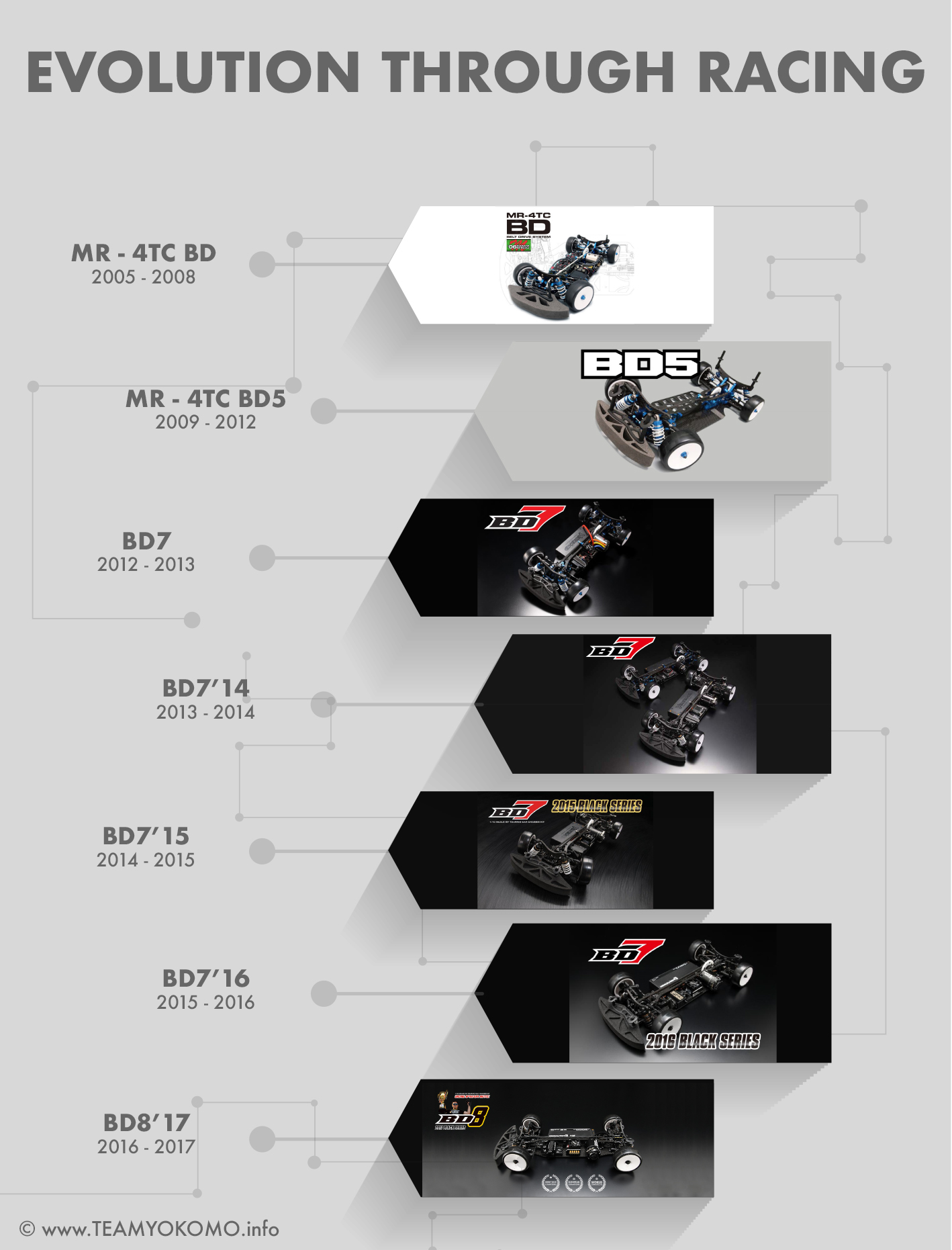
In 2005, we released our first touring car to feature a belt-drive layout with machined aluminum bulkheads, motor mount and suspension mounts, the BD. It went on to achieve great results on track, finishing on the podium at both the 2006 and 2008 World Championships.
The subsequent BD5 coincided with the arrival of Ronald Volker onto the team, and marked a new era for Yokomo in the touring car scene. Shortly after joining the team, Ronald and the BD5 went on to win numerous championships, including the highly coveted ETS Championship title, two years in a row. Yet, this was just the beginning.
The BD7 that followed was to become, arguably the most winning chassis platform in Yokomo's history, bringing home our second ISTC World Championship title in 2014, and three consecutive ETS Championship titles to make it 5 in a row from 2010 to 2015. An unprecedented feat that will likely stand for years to come.
However, never to rest on our laurels, our racing team is constantly pursuing ways to further improve performance, over thousands of testing laps, hundreds of races, and many championships. You can be assured that Yokomo cars are always track tested, and race proven. Keep reading to find out more about our latest evolution, and what you can expect with the all-new BD8.

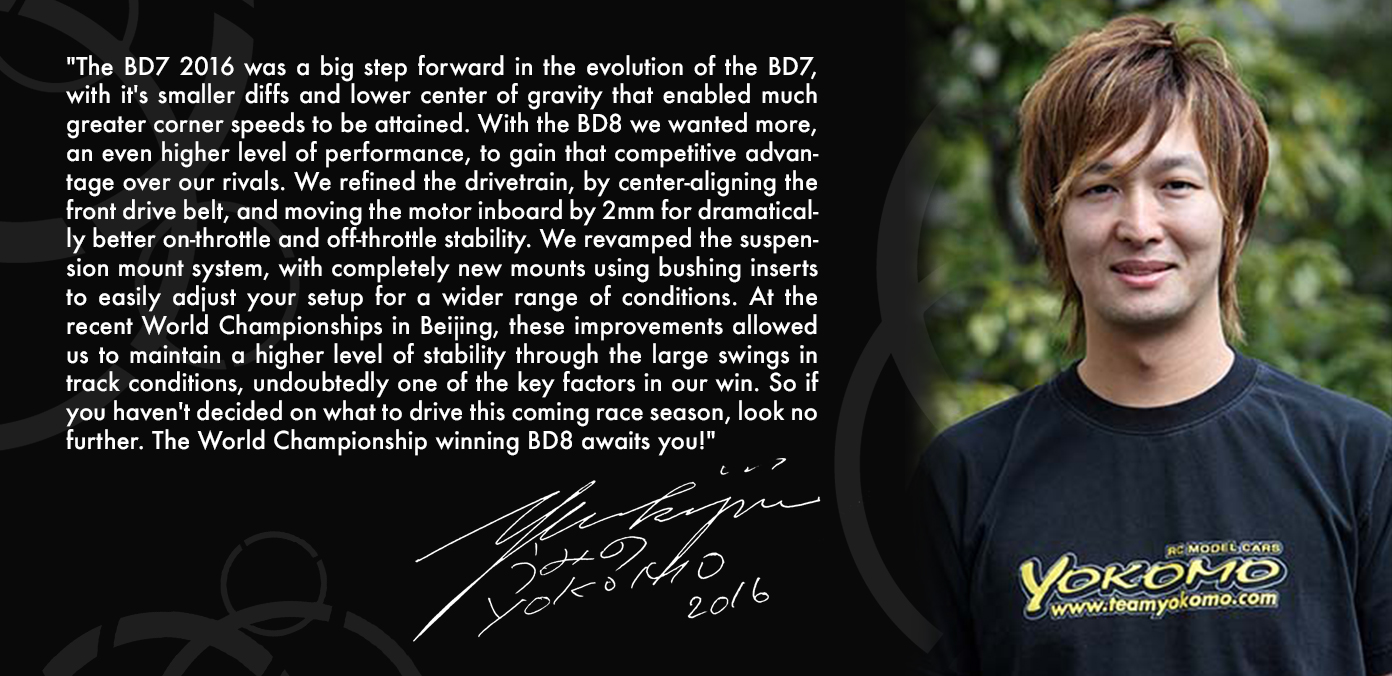
ROAD TO THE WORLD'S: REEDY RACE OF CHAMPIONS
The legendary Reedy Race of Champions held at the end of May each year is well attended by the top teams, as it is generally the first major asphalt race of the season. Still several months away from the World's, a BD8 prototype in it's initial stages was discretely brought over to be race-tested and put through it's paces. The solid potential of the prototype was a very promising start in our campaign toward the World's.
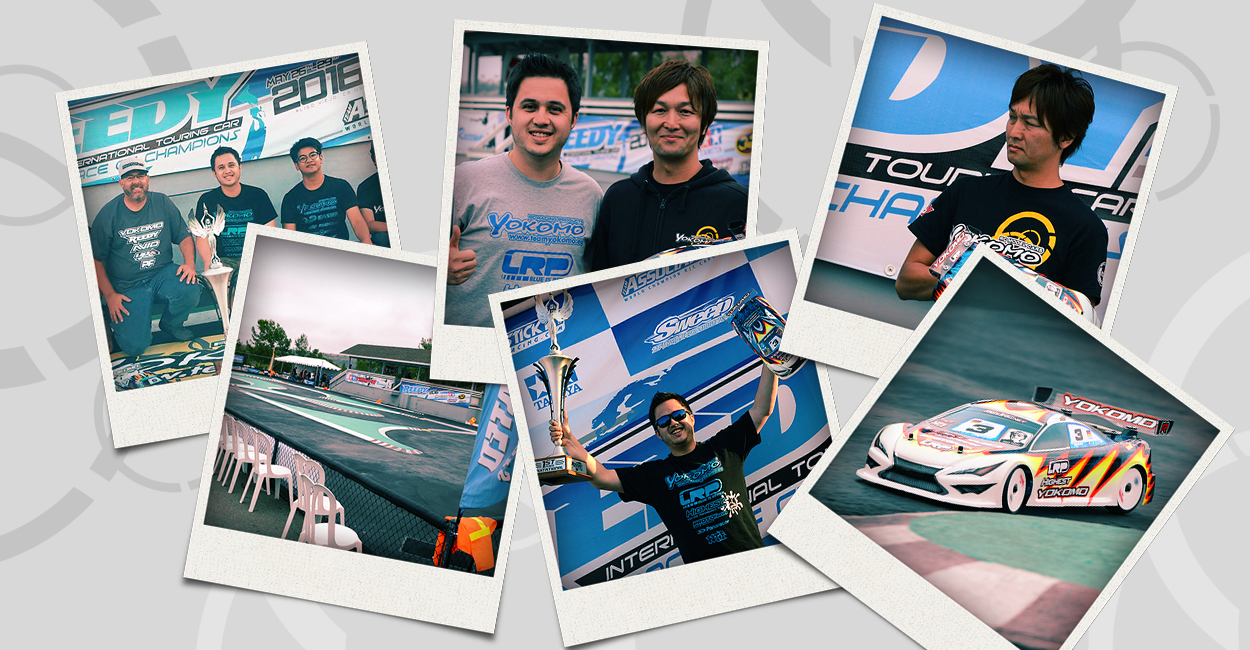
ROAD TO THE WORLD'S: EUROPEAN CHAMPIONSHIPS
Except for perhaps one team, the Hudy Arena located in the nice town of Trencin in Slovakia is arguably the toughest venue to race at. It is home to one of our strongest rival manufacturer teams, and to do well there requires serious preparation. And luck would have it, the Hudy Arena was selected to host this year's European Championships. It was a close, hard fought win, but also a great push for more development.
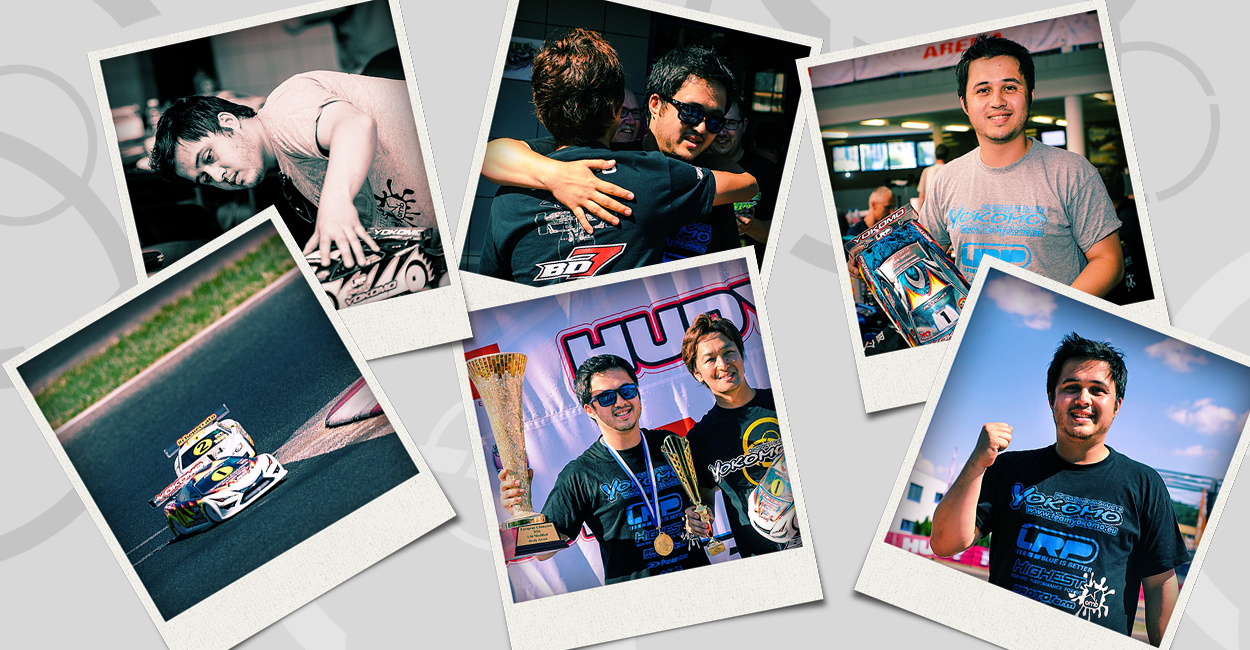
ROAD TO THE WORLD'S: FINAL PREPARATIONS
A unique aspect of this year's World Championships in Beijing was that no one was able to drive on the track until the event began. One could only speculate what the asphalt surface would be like, or what level of traction to expect. Online photos of the previous track located near the facility would be our only gauge, as well as checking predicted weather for the event. The team decided that it would be best to test on a few similar sized tracks with varying levels of grip, in weather conditions similar to what we might expect in Beijing. as it was impossible to know what we would be faced with on race day. So in the weeks leading up the event, test sessions were held in Japan, at tracks such as Green Park Circuit and Sagamido Circuit. The week prior to the main event, the team gathered in Xiamen China at ARC Raceway to make final preparations and test any updated components. It turned out to be a very productive test and a great way to get acclimated to the conditions.
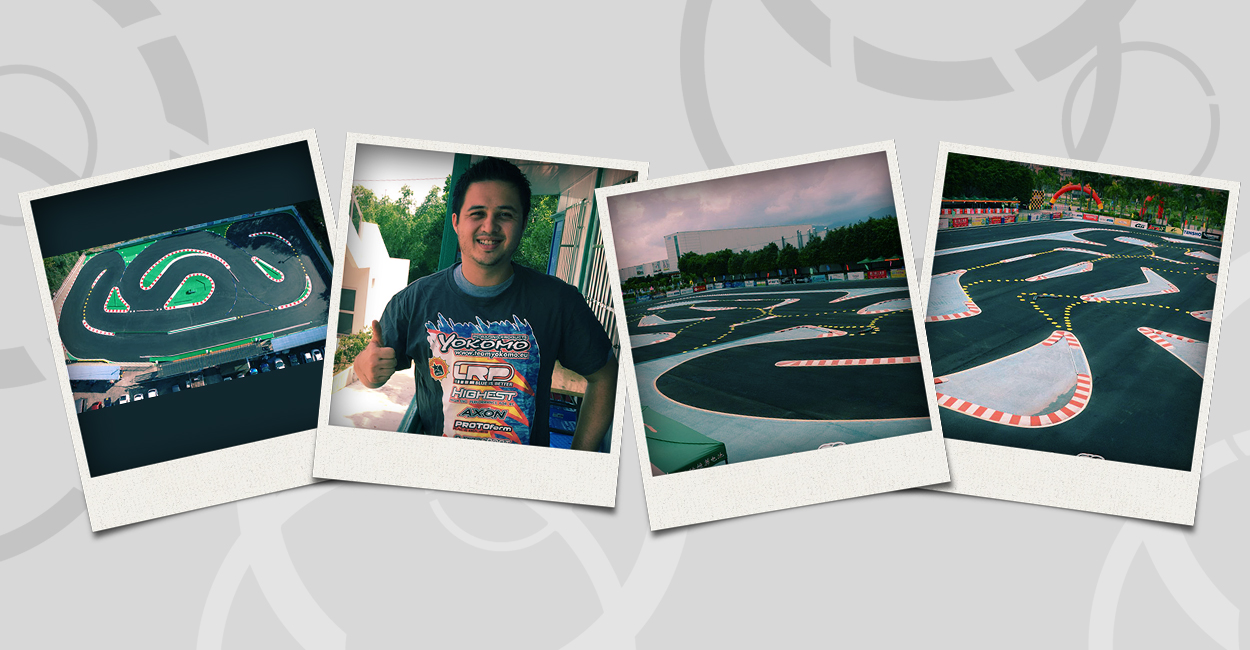
ROAD TO THE WORLD'S: THE MAIN EVENT
A World Championship title is a coveted title regardless of racing category, but in the world of electric car racing, the ISTC class is arguably the most competitive, and as a result, the most sought after World Championship title. Hopefully many of you had the chance to follow coverage of the event, and witness Ronald Volkers's long-deserved win like we were. The racing itself was a blur for many of us on the team , but in the end it was a very special experience. The many hours (actually years) of testing, developing, and racing paid off. A true testament of the persistence by our team to always push forward and never give up.
We hope this summarized story behind the development of the BD8 will inspire you to go out and try one. Just like you, we are passionate racers and love the hobby. We are confident you will enjoy driving and racing it!
(Special thanks to Tommy Dai for the immense help during our stay in China! You're the best!)
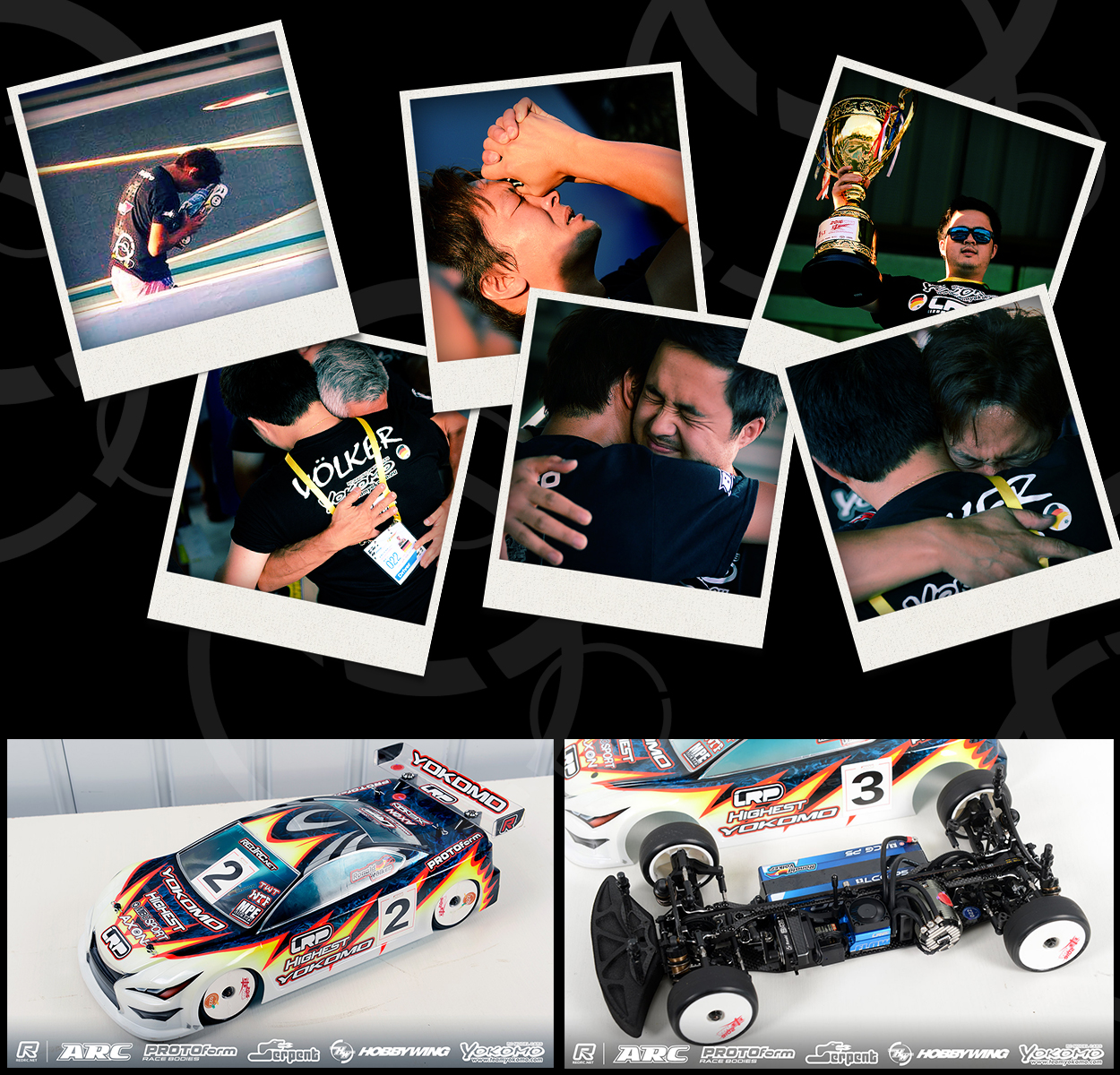
TRACK TESTED. RACE PROVEN. THE BD8
And now, we are proud to introduce to you, the latest evolution of our flagship touring car, the BD8. Outlined below are main features of the BD8 chassis kit, which will be available to you in two versions, the BD8 with carbon graphite main chassis (#MRTC-BD8), and the BD8 with machined aluminum main chassis (#MRTC-BD8A).
For BD7-2016 will be also available Conversion Kits, with carbon graphite main chassis (#B8-17C), and the BD8 with machined aluminum main chassis (#B8-17CA).
Forthcoming optional parts include an all-new Rear Toe Control (RTC) system (aka ARS) for improved adjustability on especially asphalt tracks. Stay tuned for announcements on availability.
It's been tested, it's been raced, and it's been proven. Now it's your turn take the wheel!

-New Centre Aligned Front Belt System, the front belt now runs up the middle of the car which improves the carís balance as well as smoothness during on-power acceleration.
- Large 22T Centre Pulley, the centre pulley has been changed to allow the front and rear belt to run off the same pulley, providing a longer wear for front and rear belts whilst also offering improved acceleration.
- Bush / Insert Suspension Blocks, Yokomo have now moved to the bush / insert style suspension blocks, which allows customers easier toe adjustments, the new blocks are also lower which further improves the car centre of gravity.
- New Motor Mount / Flex System, The new car carries a smaller motor mount design, which has moved the motor forward inboard (Centre) to increase the cars overall balance, the new motor mount also has new screw placements underneath the chassis which will improve the cars overall grip and corner speed once again.
- New lightweight graphite plastics , The BD8 will compromise of all new plastic parts, including, Suspension arms, Front Caster Blocks and Knuckles, as well as rear hubs. The new plastics improves the cars performance in a range of different conditions.
- New Servo Mount Design, The new servo mounts runs further up the centre line of the chassis making a slight adjustment to the flex characteristics of the car. The new servo mount will also now be a standard item in the new car.
- Front Double Joint DCJís, Yokomoís high-quality front DCJís will also remain a standard feature in the new kit.
- Bulkhead X Braces, A feature which will carry over from the BD7, is the ability to run the X braces, which gives drivers more tuning options in different conditions.
- Big Bore SLF 2 Short Shocks, Yokomoís big bore high capacity shocks which also carry a low COG design will be carried over to the new car.
